Under pressure, President William Lai (賴清德) has enacted his first cabinet reshuffle. Whether it will be enough to staunch the bleeding remains to be seen.
Cabinet members in the Executive Yuan almost always end up as sacrificial lambs, especially those appointed early in a president’s term.
When presidents are under pressure, the cabinet is reshuffled. This is not unique to any party or president; this is the custom. This is the case in many democracies, especially parliamentary ones.

Photo: Tien Yu-hua, Liberty Times
In Taiwan, constitutionally the president presides over the heads of the five branches of government, each of which is confusingly translated as “president” of their branch.
In theory, the Executive Yuan is intended to form the executive branch of government, headed by what is normally termed “premier” in English, but is formally the President of the Executive Yuan. This branch is charged with running the day-to-day business of executive government functions.
Constitutional changes have blurred the lines between the executive branch and the presidency. The premier is hired and fired by the president alone, and Executive Yuan cabinet members no longer need to face confirmation hearings in the legislature.
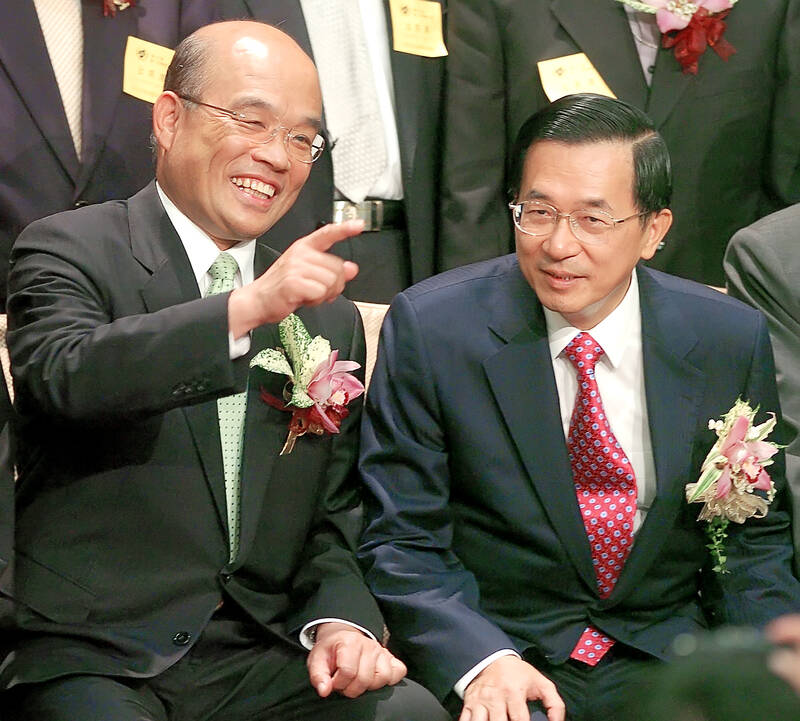
Photo: Wang Min-wei, Taipei Times
This makes the premier and the cabinet subordinate to the president, who may or may not get deeply involved in the running of the government.
As public discontent rises, the cabinet and premier bear the initial blame. It is very rare for a premier to be more popular than the president, who is nominally above the fray, while the cabinet is on the front lines taking fire.
HARD CHOICES
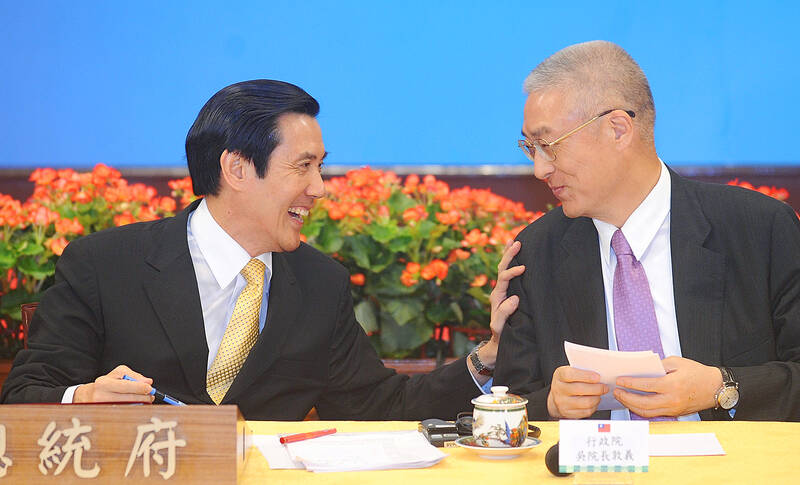
Photo: Liao Chen-huei, Taipei Times
Politically, when deciding to do a cabinet reshuffle, the president must consider three criteria: public opinion, internal party politics and factions and the opposition.
The scale and makeup of a reshuffle matter. In some cases, public dissatisfaction is related to specific issues — such as the economy — and positions related to those issues will be high on the chopping block.
If the discontent is more general, or the president wants to atone for a major electoral defeat by the ruling party, the cabinet may be symbolically purged on a broader scale.
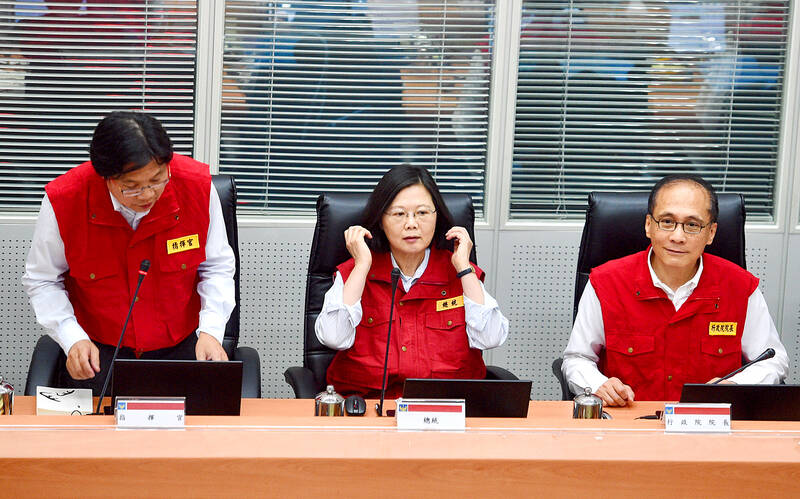
Photo: Peter Lo, Taipei Times
The ultimate sacrifice is the premier, and they typically have short lifespans. In their eight years as president, Chen Shui-bian (陳水扁) had six premiers, Ma Ying-jeou (馬英九) seven and Tsai Ing-wen (蔡英文) three.
There are some exceptions to typical premier purges, with the most notable being Lai himself when he was Tsai’s first premier. Officially, he resigned to take responsibility for the Democratic Progressive Party’s (DPP) disastrous loss in the 2018 local elections, but it soon became apparent it was to launch his ultimately failed challenge to Tsai in the DPP primary to be the party’s 2020 presidential candidate.
The political imperative to demonstrate to the public that they understand their frustrations and are “doing enough” to rectify the situation by sacrificing top government officials can collide with the practical realities of effectively governing the nation.
It is a difficult choice to disrupt the leadership, continuity and morale of a government ministry — especially if they are doing a good job. For example, Lai is replacing economics minister J.T. Kuo (郭智輝) in spite of GDP growth exceeding expectations, inflation largely under control, wages rising in real terms and, belatedly, housing prices have stabilized.
Yet, in the latest Formosa poll, 50.7 percent of the public wanted Kuo ousted, so Lai had little choice. He is likely the victim of broader economic uncertainty, including fears about the impact of US tariffs, which he had little control over.
Lai chose to appoint new ministers of economics, health, digital affairs and sports, as well as 12 deputy ministers. This is a relatively minor reshuffle.
BESET ON ALL SIDES
Much of the pressure Lai is under is related to a decision made not as president, but as DPP chair, in choosing to formally support the recall campaigns, which ended in complete defeat. This was the only significant political change between late June and late last month.
In that period, his polls cratered disastrously, with trust in him personally dropping nearly eight points and satisfaction in his administration dropping 10 points, putting both deep in the red for the first time.
Following those results last month, things got worse, with accusations of poor handling of typhoon damage and the announcement of 20 percent American tariffs, higher than the 15 percent levied on Japan and South Korea — though both had to offer massive concessions, and Taiwan has so far offered none. Negotiations are ongoing. His polling dropped further by late this month, with satisfaction with his administration now only 31 percent and dissatisfaction hitting 60 percent.
The same poll found that 49.3 percent believed that the sweeping loss of the recalls was to teach Lai and the DPP a lesson, while only 17.4 percent thought it was a show of support for the Chinese Nationalist Party (KMT) lawmakers facing recall.
Meanwhile, the president is facing not one, but two internal rebellions. One is a movement to oust the controversial DPP caucus convener Ker Chien-ming (柯建銘) and the other is an open letter signed by 17 DPP city and county councilors across faction lines calling for Lai to “face up to our crisis.”
During the Chen years, the DPP was an openly brawling mess, which under Tsai was brought under control. The party became far more disciplined and on message.
They may have overcompensated, however. Recently, the party has become eerily uniform and conformist.
That two rebellions are breaking out now is very significant, though the next week or two will likely clarify if they have staying power or will fizzle out. Regardless, this indicates that discontent with Lai’s leadership inside the party is a problem that will be hard to solve.
CALCULATED GAMBLE
President Lai appears to be gambling that a small cabinet reshuffle will be enough to mollify both the public and the party in the long term. The opposition had not offered any constructive suggestions, and predictably slammed his changes, so presumably Lai did not factor them into the equation.
Most likely, Lai decided that the stability and continuity of the cabinet and the abilities of Premier Cho Jung-tai (卓榮泰) in governing the nation were more important. This is an expression of confidence in his team, and he is probably calculating that the long-term results of their good governance outweigh potential political short-term blowback.
Whether or not his team can win back pubic support is hard to predict. Much could depend on factors out of his control, and if there are any internal scandals in the cabinet in the short term, things could get ugly. But these are the kind of hard judgment calls presidents must make.
His choices in cabinet appointees do not appear to offer much in the way of concessions to the party factions. He likely made his choices prior to the new rebellions, and it is doubtful this would have made much difference due to the issues they are focused on.
However, the party is set to begin the primary process later this year for next year’s local elections. It is here where making concessions to party factions might have been useful towards party unity, especially considering how much he has favored his own New Tide faction and allies in government and state-owned business positions in the past.
This cabinet reshuffle appears more symbolic than substantive, and Lai is largely standing firm on the course he has set. This is a bold, confident choice.
Whether his calculations are correct or not, or if this is too little, too late, is too early to determine.
Donovan’s Deep Dives is a regular column by Courtney Donovan Smith (石東文) who writes in-depth analysis on everything about Taiwan’s political scene and geopolitics. Donovan is also the central Taiwan correspondent at ICRT FM100 Radio News, co-publisher of Compass Magazine, co-founder Taiwan Report (report.tw) and former chair of the Taichung American Chamber of Commerce. Follow him on X: @donovan_smith.
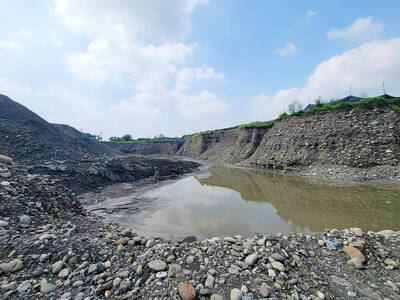
Last week the story of the giant illegal crater dug in Kaohsiung’s Meinong District (美濃) emerged into the public consciousness. The site was used for sand and gravel extraction, and then filled with construction waste. Locals referred to it sardonically as the “Meinong Grand Canyon,” according to media reports, because it was 2 hectares in length and 10 meters deep. The land involved included both state-owned and local farm land. Local media said that the site had generated NT$300 million in profits, against fines of a few million and the loss of some excavators. OFFICIAL CORRUPTION? The site had been seized

The depressing numbers continue to pile up, like casualty lists after a lost battle. This week, after the government announced the 19th straight month of population decline, the Ministry of the Interior said that Taiwan is expected to lose 6.67 million workers in two waves of retirement over the next 15 years. According to the Ministry of Labor (MOL), Taiwan has a workforce of 11.6 million (as of July). The over-15 population was 20.244 million last year. EARLY RETIREMENT Early retirement is going to make these waves a tsunami. According to the Directorate General of Budget Accounting and Statistics (DGBAS), the
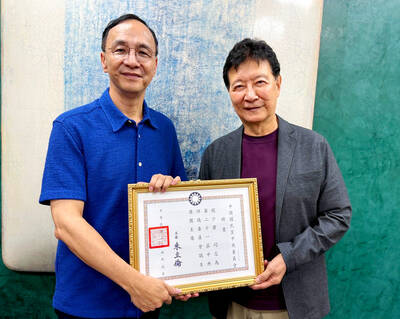
Next week, candidates will officially register to run for chair of the Chinese Nationalist Party (KMT). By the end of Friday, we will know who has registered for the Oct. 18 election. The number of declared candidates has been fluctuating daily. Some candidates registering may be disqualified, so the final list may be in flux for weeks. The list of likely candidates ranges from deep blue to deeper blue to deepest blue, bordering on red (pro-Chinese Communist Party, CCP). Unless current Chairman Eric Chu (朱立倫) can be convinced to run for re-election, the party looks likely to shift towards more hardline
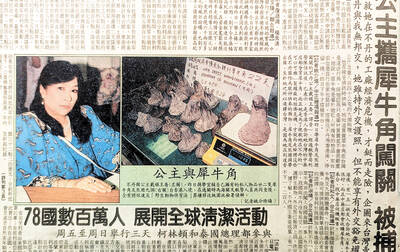
Sept. 15 to Sept. 21 A Bhutanese princess caught at Taoyuan Airport with 22 rhino horns — worth about NT$31 million today — might have been just another curious front-page story. But the Sept. 17, 1993 incident came at a sensitive moment. Taiwan, dubbed “Die-wan” by the British conservationist group Environmental Investigation Agency (EIA), was under international fire for being a major hub for rhino horn. Just 10 days earlier, US secretary of the interior Bruce Babbitt had recommended sanctions against Taiwan for its “failure to end its participation in rhinoceros horn trade.” Even though Taiwan had restricted imports since 1985 and enacted